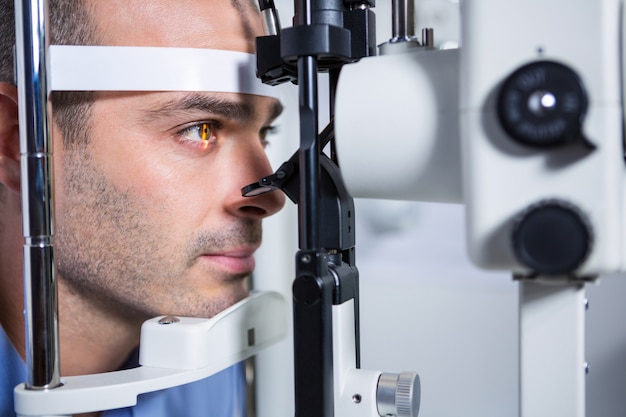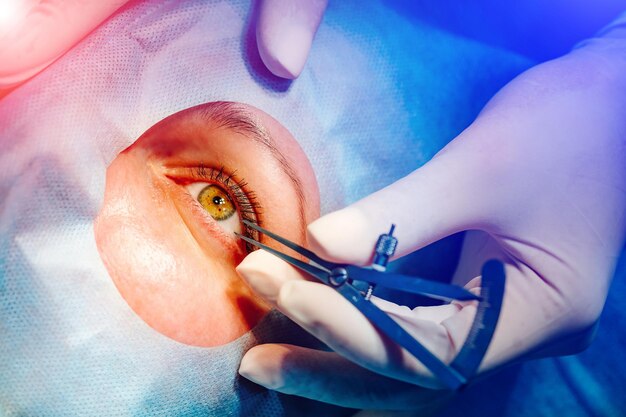Health
Advancing Eye Health: Laser Cataract Surgery | Aarti Pandya

The field of medicine has seen remarkable advancements over the years, and one area that has seen significant progress is eye care. Cataracts, a common age-related eye condition, have traditionally been treated with manual surgery, which involves using a scalpel to remove the clouded natural lens and exchange it with an artificial intraocular lens (IOL).
Fortunately, innovations in medical technology have led to innovative treatments, and one of the most significant breakthroughs in recent years has been the development of laser cataract surgery. This revolutionary procedure has transformed the way cataracts are treated, offering numerous benefits over traditional cataract surgery.

Understanding Cataracts
Before we delve into the specifics of laser cataract surgery, let’s first understand what cataracts are and why they require treatment. A cataract is a blurring of the natural lens of the eyes, which lies behind the iris and the pupil. This clouding occurs due to the buildup of protein in the lens, leading to blurred or impaired vision. Cataracts are typically age-related but can also result from factors like genetics, diabetes, or exposure to UV radiation.
Traditional Cataract Surgery vs. Laser Cataract Surgery
Traditional cataract surgery, also known as phacoemulsification, involves making a small cut in the cornea and using ultrasound energy to break up the clouded lens, which is then removed manually. The artificial intraocular lens (IOL) is then inserted to replace the cloudy natural lens.
Dr. Aarti Pandya explains, “Laser Cataract Surgery uses femtosecond laser technology to perform key steps of the surgery with unparalleled precision. This technology enhances the surgeon’s ability to create precise incisions, break up the cloudy lens, and position the IOL accurately.”
In contrast, laser cataract surgery incorporates advanced femtosecond laser technology to perform key steps in the surgical process with unparalleled precision and accuracy. Here’s why this approach is considered a game-changer:
- Precision and Accuracy
Customary cataract surgery involves the use of a manual blade to make an incision in the eye. On the other hand, laser cataract surgery uses a femtosecond laser for exact incisions. This precision results in a reduced risk of complications during the surgery, such as injury to nearby tissues, and allows for better overall outcomes.
- Increased Safety
Laser cataract surgery enhances safety during the operation. The laser’s real-time imaging capabilities allow the surgeon to visualize the eye’s structures more clearly, reducing the risk of complications during surgery. This added safety is especially beneficial for patients with complex or challenging cases.
- Improved Visual Outcomes
The precision of the laser technology used in cataract surgery ensures that the IOL is positioned accurately within the eye, optimizing visual outcomes. Patients often experience improved vision with reduced dependence on glasses or contact lenses after laser cataract surgery.
- Customized Treatment
Every eye is unique, and laser cataract surgery takes this into account. Surgeons can use advanced imaging technology to create a detailed 3D map of the eye, allowing for a customized treatment plan. This personalized approach results in better vision correction and reduced risk of complications.
- Reduced Energy and Ultrasound
Traditional cataract surgery relies on using ultrasound energy to fragment the cloudy lens for removal. This can sometimes lead to heat buildup and potential damage to the surrounding structures. Laser cataract surgery significantly reduces the need for ultrasound energy, making the procedure gentler on the eye and minimizing the risk of complications.
- Rapid Recovery
Patients who undergo laser cataract surgery often experience quicker recovery times compared to traditional methods. The precision of the laser incisions promotes faster healing, and many individuals report improved vision within a few days, allowing them to return to their normal activities sooner.
- Reduced Inflammation
The precision of the laser in breaking up the cataract reduces the amount of ultrasound energy needed during surgery. This results in less trauma to the eye, leading to reduced inflammation and a lower risk of complications.
- Enhanced Safety for Complex Cases
Laser cataract surgery is particularly advantageous for patients with complex or advanced cataracts, as it enables surgeons to manage these cases more effectively and with a higher degree of safety.
- Future-Proofing
The technology used in laser cataract surgery continues to evolve, promising even better outcomes and safety in the future. Patients can benefit from ongoing advancements in the field.
- Astigmatism Correction
Laser cataract surgery can also correct astigmatism during the procedure. This means that not only can your cataract be removed, but your astigmatism can also be addressed simultaneously, potentially reducing your dependence on glasses or contact lenses after surgery.
- Long-Term Benefits
The benefits of laser cataract surgery are not just immediate; they extend into the long term. Patients often report improved overall quality of life, increased independence, and enhanced enjoyment of activities like reading, driving, and watching TV.
The Future Potential of Laser Cataract Surgery
As technology continues to advance, the future of eye health through Laser Cataract Surgery holds even more promise. Dr. Aarti Pandya elaborates on the possibilities: “We constantly see improvements in laser technology and surgical techniques. In the near future, we may witness advancements such as customized IOLs for each patient, further reducing the need for glasses and even greater precision in cataract removal.”
Moreover, integrating artificial intelligence (AI) into the field of ophthalmology may play a pivotal role. AI algorithms could assist surgeons in analyzing patient data, optimizing surgical plans, and predicting post-operative outcomes, ultimately leading to safer and more effective procedures.
Conclusion
Laser cataract surgery represents a remarkable advancement in the treatment of cataracts, offering patients enhanced precision, safety, and visual outcomes compared to traditional surgery. Its ability to customize treatment and facilitate rapid recovery has made it a game-changer in the field of ophthalmology. As technology continues to evolve, the future looks bright for those in need of cataract surgery, with even more improvements and innovations on the horizon. With ongoing research, technological innovation, and the dedication of professionals like Dr. Pandya, the future of eye health appears brighter than ever. If you or a loved one are facing cataract surgery, consider discussing Laser Cataract Surgery with your ophthalmologist to explore its potential benefits for your eye health and vision.


